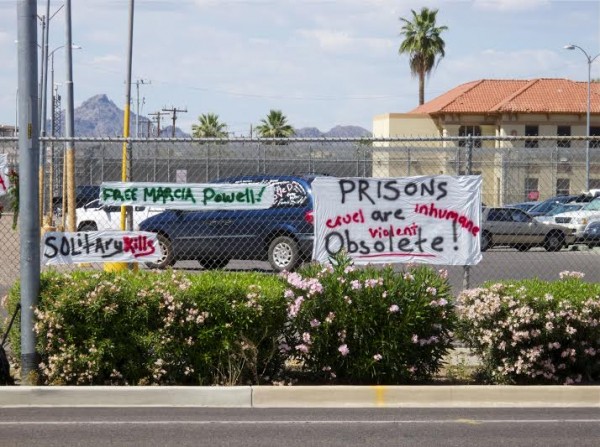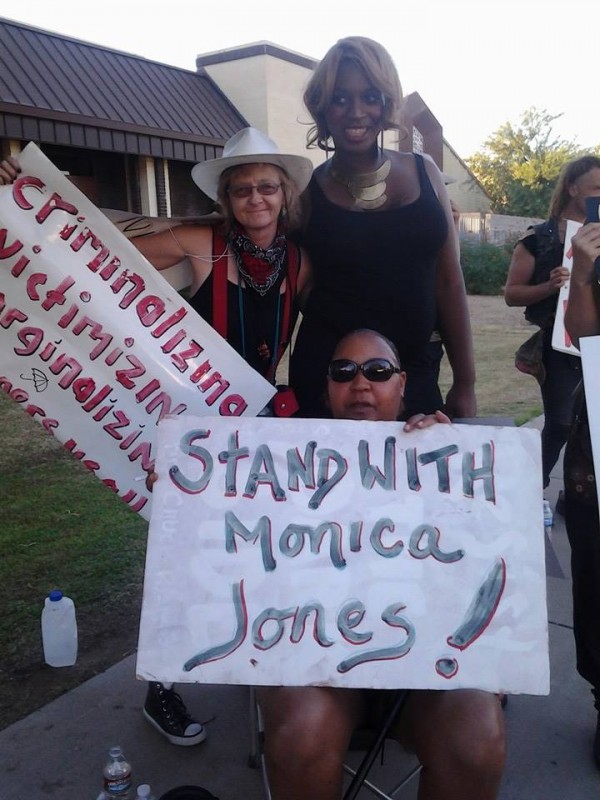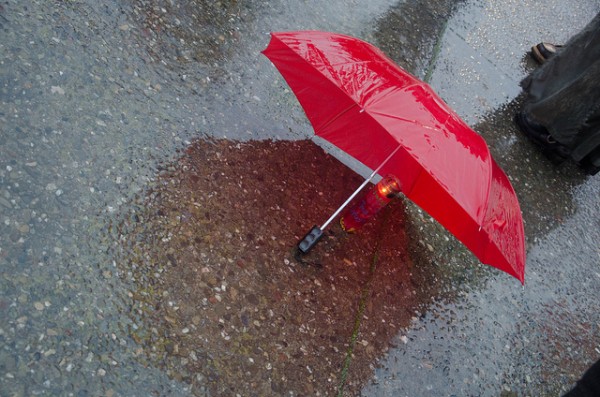Activist Spotlight Interview: PJ Starr On Marcia Powell And Prison Abolition

Editor’s note, 8/31/2017: In light of Trump’s pardon of former sheriff Joe Arpaio for his contempt of court conviction re: the order to cease his reign of terror against immigrants in Arizona’s Maricopa County, we’re posting an updated edition of my September 2014 interview with PJ Starr. I interviewed Starr on her documentary about Marcia Powell, a sex worker left caged in the Arizona sun to die of heat stroke and dehydration in Perryville Prison. Arpaio is a mass inmate murderer and human rights violator. During his tenure as sheriff, many prisoners died of negligence and exposure, suicide in despair at intolerable conditions, and beatings from guards. Maricopa County paid out millions of dollars in lawsuits over these deaths. The Phoenix New-Times called them “a parade of corpses“, but Arpaio refused to disclose exactly how many prisoners had died. However, the paper verified that the rate of prisoner suicides alone in his facilities “dwarf[ed]” those of “other county lockups”. Arpaio himself once proudly called his tent city a “concentration camp.” His carceral tent city and chain gang model spread throughout the state, and Arpaio’s brutality was itself a reflection of the state’s violent, punitive criminal justice system. Powell wasn’t under Arpaio’s care when she died, but she went through his jail system, and the agony she suffered was a direct result of his approach to the prison industrial complex. Her blood is on his hands. And because of Arizona’s draconian prostitution mandatory minimums, many other sex workers endured Arpaio’s abuses as well. And yet, Arpaio himself is only a symptom of Arizona’s consistent disregard for prisoners’ human rights.
I asked Starr a few additional questions this week which I’ve appended to the end of this interview, to find out what she learned about Arpaio in the course of making her documentary and working alongside SWOP-Phoenix.
Content warning: this post describes the murder of an imprisoned sex worker through neglect and human rights abuse in graphic detail. It also touches on structural violence and violence against sex workers in general.
I spoke to sex worker rights film maker and photographer PJ Starr about her upcoming documentary film, NO HUMAN INVOLVED, on the death of Arizona street worker Marcia Powell through prison brutality. The interview that follows is a composite of a week of e-mails between the two of us.
Who was Marcia Powell?
Marcia Powell was arrested in 2008 for solicitation of prostitution and was sentenced to 27 months in Perryville Prison, a women’s prison located in Goodyear just outside of Phoenix, Arizona. In 2009, while she was serving that sentence, she was left in a cage in the sun during the heat of the day for hours. She collapsed and some hours later died in a hospital in Goodyear when the Director of the Arizona Department of Corrections had her removed from life support.
Marcia should not be and cannot be defined solely by her death. Marcia Powell was a parent; she named one of her children—her daughter—”Eureka”. A former partner described her as “so beautiful she would stop traffic.” Marcia loved coffee, everyone who knew her in prison mentions that. She had experienced mental health issues, that was clear, but as one of her friends from Perryville said to me during an interview, “she had good sense.” On one hand, there is the public figure that Marcia came to be after her death, but, as is always the case, her story is much more nuanced than what we can contain in one news story. At points in her life she did not even choose to be “Marcia Powell.” She sometimes used another name, but in prison, her ID name Marcia Powell came to be how she was known and is now remembered.
How did you get the idea to make a film about her death?
Firstly, in 2009, when Marcia Powell died, my friend Cris Sardina (who is now the co-coordinator of Desiree Alliance, but then was involved with the Women’s Re-Entry Network in Arizona) sent me an e-mail telling me about what had happened. Cris’ message put the story in my mind and I continued to think about it for a long time. Secondly, I was given a space to be part of the Filmmakers’ Collaborative at the Maysles Institute in 2010 and the collaborative focused on writing a treatment for documentary film. I proposed three ideas to the other filmmakers and every person in the collaborative advocated for me to make a film about Marcia Powell. That was a wake up moment for me to think that other people outside of the movement for sex worker rights would be so affected by the story, so I prioritized the film. I thank the other filmmakers at Maysles for helping me see what was important for me to pursue.
Who is the intended audience for your film? What would you like viewers to learn about the prison system and survival sex work by watching No Human Involved?
I am very proud that we have the genre of representation that has been carefully encouraged by people like the incomparable Carol Leigh, and I am always keen to make films that speak to the sex worker community, but I have been working on this film with the aim of having a broader audience as well. I am aiming for the film to also resonate with people who may care about human rights or women’s issues already, but who really have not yet had information about what I am starting to think of as a conveyor belt that moves people along via arrests for prostitution, or related issues like “trespassing” of “camping” in urban areas, to the court where they have no choice but to plead guilty, to the prisons where they are at the mercy of a brutal system of incarceration.
In the promo video for your film, Peggy Plews laments, “How can sixteen people pass by a human being in a cage—defecating over herself and pleading to be let out—and do nothing?” Where does this systemic brutality come from? How can we combat it?
Yes, how can so many people ignore someone who is begging for water? Incarceration relies on categorization, dehumanization and a hierarchy of command that distances each person from responsibility. Part of the problem that day was that Marcia was not seen as a person in a cage by the officers walking by. She was viewed as an irritant, a thing to be ignored until the sounds (i.e., her pleas) stopped. But no matter how responsible those individuals are for what happened, there is equal responsibility held by the people who have designed the current approach within the Arizona Department of Corrections. People who institute and maintain systems of brutality have a vested interest in erasing its history so that it seems that the the system is “normal” and permanent, and that there is no way to create change.
The first step to being involved in change is then to learn how the system was set up so we can dismantle it. One excellent resource is the book Sunbelt Justice by Mona Lynch, which explains how Arizona’s carceral policies developed and the role that their approach plays in America’s current system of mass incarceration. Another step in combating brutality is to be in solidarity with prisoners, because wherever there is injustice there is always resistance. And perhaps one more element to remember is to keep an open mind about who can be part of standing up against the abuses as allies. There are people who have worked in Corrections who challenge the dehumanization and who have questioned what happened to Marcia Powell. The system is not as invulnerable to criticism from within as the leadership might want the public to think.


